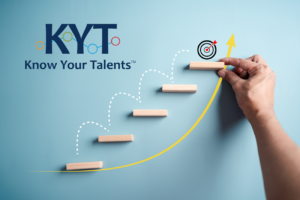
Flexing Your Emotional Muscle
Our PERCEPTION impacts our emotional muscle!
Do you hear or do you listen? Sometimes our entire day can turn upside down because of an “in the moment” comment someone made. Perception of how others see us shouldn’t matter. But, that is easier said than practiced. It is second nature to internalize how others feel about us. When we bottle up what is affecting us, we risk regressing to our backup communication style. Same as resist, resent revenge – all our behaviors will take us down this path – if we let stressors cause us to feel threatened, our instincts with kick in quickly.
Think about how many hours of working out it takes to strengthen your muscles. This same with our behavior, we must build on it. Every day we are emotionally challenged to toughen up and if you are one who tends to avoid tense interactions, you won’t build your emotional muscle. However, sometimes we must to step back reevaluate what our needs, and implement self-care.
Our behavior plays a big role in our day to day. We create our own belief window based on how we have learned to adapt and adjust according to deeply engrained past experiences. Melanie shared a story about the formation of her own belief window:
For some of us, our behavior depends on what others think of us. Unfortunately we really can’t control the perceptions others have of us.
Just as importantly, get to know your coworkers and understand how to leverage yourself around their backup styles. A High D may display little disregard for other’s feelings and blaze through conflicts. When these folks get into their backup style, let them get throught it, and take the in between with a grain of salt. It will be wiser to readdress conflict after they have had their times to process.
A person with a High E trait may react to confrontation with an extreme response that often takes the form of a verbal outburst. They feel highly discomforted when their credibility it in question. They want to show up well, and be told so! With that in mind, it is best to maintain genuine, open communication with them. They do not like to be blindsided by bad news and may feel undermined when they are presented with a problem that could have been avoided with a little bit of conversation.
Open communication is the key to helping a High Patience/Pace person out of their backup styles. Their challenge- they can’t say “no”. Therefore, they can seem inattentive and stubborn at times. But, that is to be expected of a person whose back up style is to avoid conflict at all costs. They will go lengths to appease others before realizing that their To-Do list is a mile long! Try to recognize when a High P is internalizing that which is causing them to stress. Help them by providing prioritization of tasks and allow them to process their workload before assigning them more tasks.
Have you ever been in the middle of discussing an unplanned change or unexpected event with one of your teammates and you noticed something you turned them into a brick wall? That probably means you just sent a High C into their backup style. They put forth their best effort so they can live in an ‘error free’ world. When they cannot prepare for a change, or do not see one as necessary, they will build a detailed fact-based case to demonstrate why an operation shift is doomed to fail. Help them navigate their fears by ensuring through leadership that they will continue to work in a stable, secure environment. Keep them informed of the logic behind your reasoning in every step of the way!
After all, who we are influences how we frame our “belief window.” Our behavior plays a big role in our day to day decisions and interactions. Learning to acknowledge and adjust how we relate to others’ stress will allow us to truly be compassionate with one another as we work together.
That’s why we love our ProScan because it makes these conversations easier to navigate and prepare for!
Stay tuned for our next Tutor Tuesday Review- learn more about leveraging behavior on our blog. Become a Professional PDP Administrator for your organization to be invited to our Tutor Tuesday seminars every week! Also, we’re going social- follow, like, and link with us on Twitter , Facebook , LinkedIn , and Instagram. If you know of an organization or company that may benefit from the Know Your Talents™ Leadership Impact! Workshop please contact us or call at 480-348-8900!


